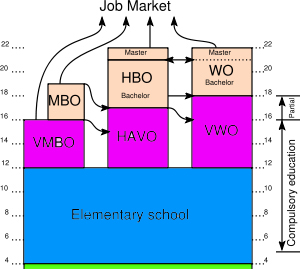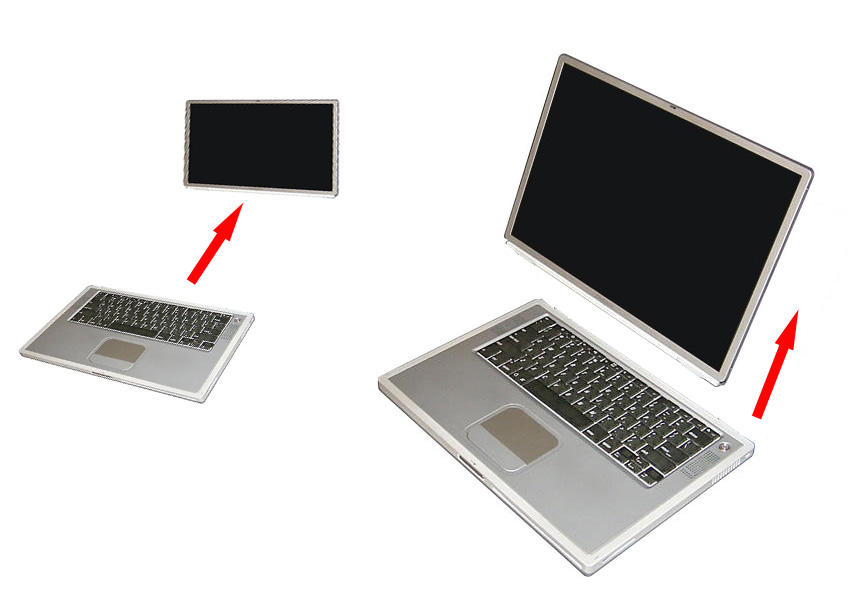000off_WHAT_school!? WE CAN ACQUIRE HIGH QUALITY FOR LOW COST IF WE ACCEPT HIGH RISE!
What if the above diagram did not represent the passage through (Dutch) education but a literal representation of the physical layering of secondary school over primary school? You would think about doing this if you could build a high quality for low cost. A compact architecture could reduce build costs down to £1100/sqm! A combined school would undoubtedly present a political maelstrom which would have to be (intelligently + sensitively =) sensibly resolved but, for starters, the identity between the two student age demographics (primary v secondary) could be maintained if the circulation were separated (so big kids age 11-18y did not bully little kids aged 4y-10) by mid floor landscapes of play!
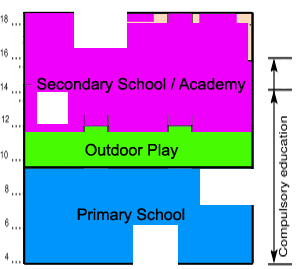

000off_BUILD YOUR OWN WEBSITE? www.whatarchitecture.com/test.php
In having not one but two webspaces we are either greedy or flash (or not-Flash since we are moving to Java scripted)). One webspace is product-based: www.whatarchitecture.com whilst the other, this one(!), is process-based: www.blablablarchitecture.com. Naturally enough, as we build our 3rd level product site the process by which it comes into being is exposed here first. Zita was right: those office brain-storming sessions – with Magda at the helm – mean we are preoccupied about the architecture of webspace. But it doesn’t have to be all project portfolio bla-bla. The webspace could be a construction site… a place to build something. Before the Architect became a hairdresser, she was a builder!
So what are the parallels between webspace and Architecture? To start with there is navigation | circulation? Could the traces of the user circulating and navigating through space inform and build the site?



000off_CUT COPY BUILDING.
Draft thoughts:
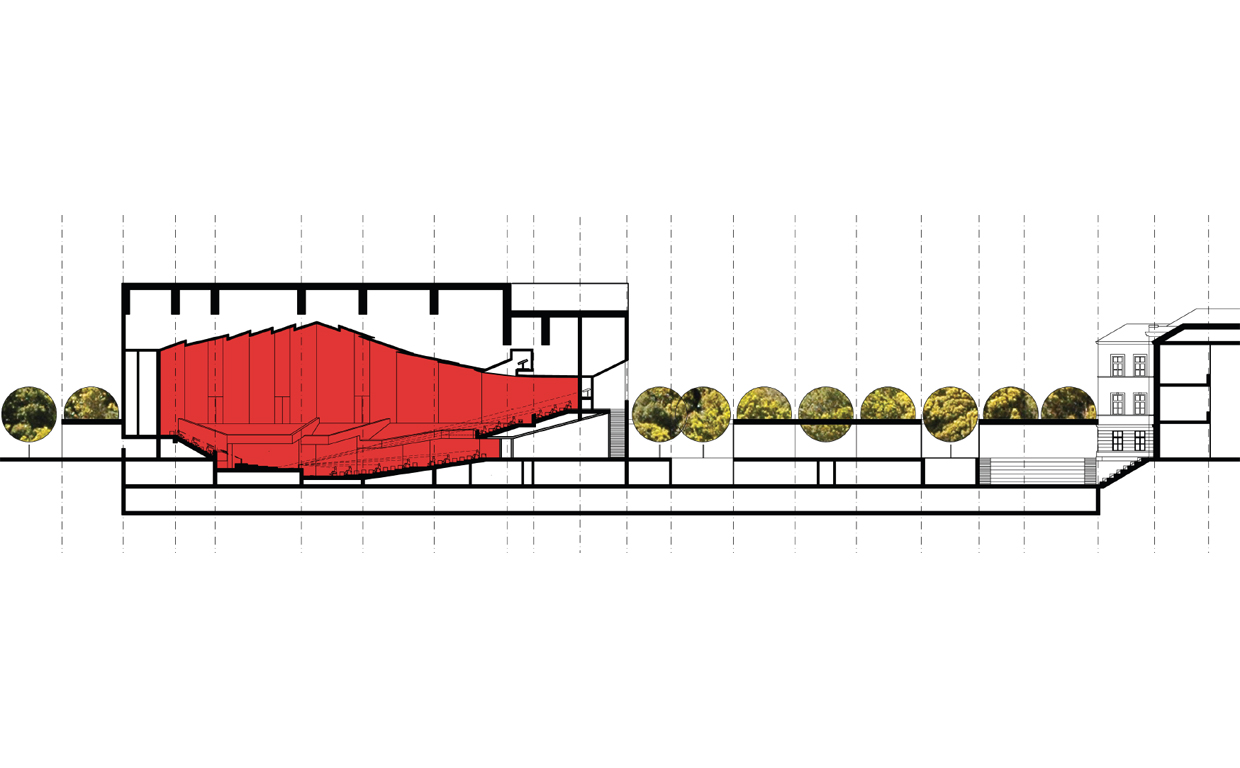 Examples:
Examples:
 Examples:
Examples:
- Warsaw: The WHAT_deployment of Hans Scharoun’s Berliner Philharmonie in the Varsovia Sinfonia project appreciated modernism’s influence on soundspaces: Concert Halls. The project appropriated the acoustic space which best-fitted (2000seat concert hall : Berlin Philharmonie) the brief (Varsovia Sinfonie) and was: a perfect modern concert hall interior placed inside a host volume of buffered programme.
- Black Villa Savoye…
- FAT’s Museum of Copying ‘uses’ the example of Palladio’s Villa Rotundo as it is, according to FAT, the most copied building in the world.

000off_BUILDING POLICE!
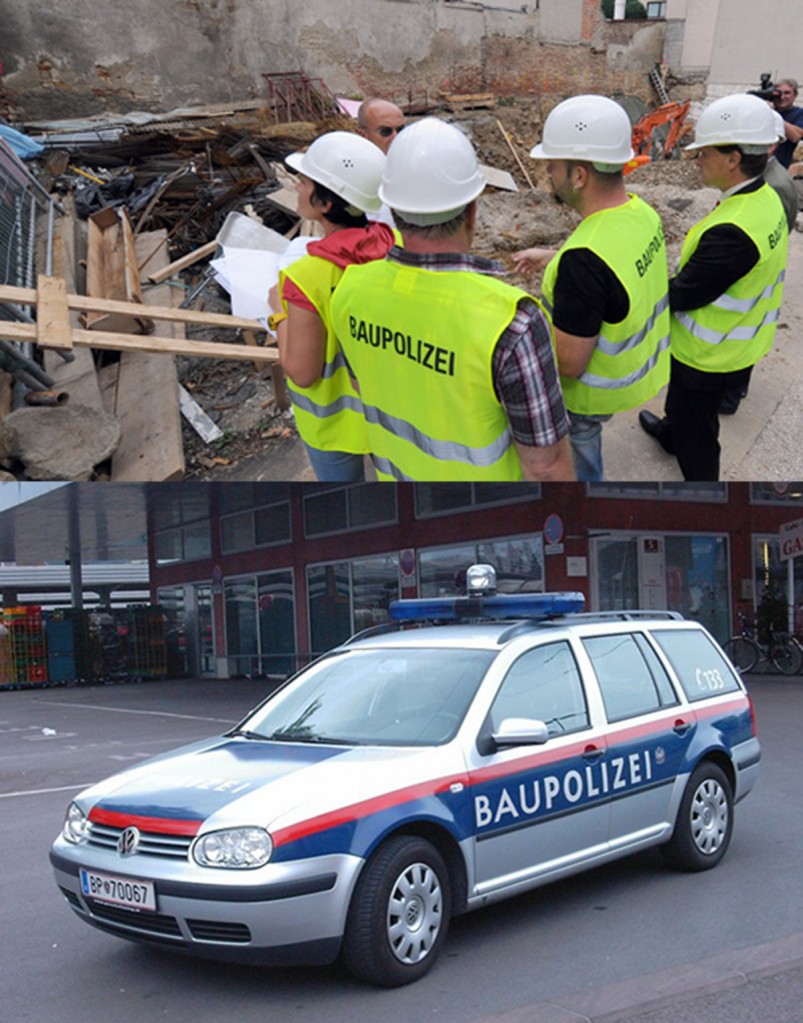 In Austria we find Building Police: BauPolizei. This recalls Jonathan Hill’s Illegal Architect with its agenda of “dislocation of architecture from the narrow confines of professionalism and its development within an expanded cultural field.” Writing from the ivory tower of academia about the subservient practice of architecture might be problematic yet Hill outlines a programme for supporting the development of illegal architects. An intruder’s practice, but “not simply a person who produces architecture without a professional qualification.” These architects may very well be licensed, but choose to operate in the “liminal space” at the edge of architectural activity.
In Austria we find Building Police: BauPolizei. This recalls Jonathan Hill’s Illegal Architect with its agenda of “dislocation of architecture from the narrow confines of professionalism and its development within an expanded cultural field.” Writing from the ivory tower of academia about the subservient practice of architecture might be problematic yet Hill outlines a programme for supporting the development of illegal architects. An intruder’s practice, but “not simply a person who produces architecture without a professional qualification.” These architects may very well be licensed, but choose to operate in the “liminal space” at the edge of architectural activity. 
000off_INTERSTICES vs 20/20 (AA publications)
 Interstices is a journal of Architecture and Related Arts is the only established publication of its kind in Australasia.
Since its inception in 1989, it has seen eleven issues, in which writers and presenters such a the 2005 Pritzker winner Tom Mayne (USA), Mark Wigley (USA), Francesco Venezia and Renato Rizzi (Italy), and Mark Goulthorpe (France, now teaching at MIT), Marco Frascari (Director of Carleton University’s School of Architecture, Canada) etc. contributed to contemporary local and international debates. The journal is published once a year and its scope is widening to address audiences beyond Australasia, who are interested in architecture and related arts.
Anthony Hoete (WHAT_architecture) sits on the editorial board along with members Mike Austin, Uta Brandes, Karen Burns, Peggy Deamer, Michael Erlhoff, Marco Frascari, Mark Goulthorpe, Fiona Jack, Robert Jahnke, Bechir Kenzari, Jonathan Lamb, David Leatherbarrow, Stephen Loo, Mirjana Lozanovska, John Macarthur, Jeff Malpas, Nigel Ryan, Joseph Rykwert, Laurence Simmons, Paul Walker, and Peter Wood
20/20: Editorial Takes on Architectural Discourse brings together editors from 20 leading contemporary architectural magazines including Interstices to discuss collectively the role editors play in shaping architectural discourse. Each of the contributors has responded to a set of 20 questions on the multiple conditions under which particular ideas and words enter architectural discourse through publication. The resulting critical positions and observations are as diverse as the magazines from which they originate, and range from the oldest student-edited journal (Perspecta) to a research collective that at the time of writing was on the cusp of being launched ([bracket]). Also included are contributions from the editors of 306090, AA Files, Actar, An Architektur, Footprint, Grey Room, Harvard Design Magazine, Hunch, Interstices, Log, Manifold, Mark, New Geographies, OASE, Praxis, Scapes, UME and Volume. 20/20 is a timely AA publication that provides today’s architectural reader with concise viewpoints from the editors behind the magazines behind architectural culture.
http://www.2020publication.info/
Interstices is a journal of Architecture and Related Arts is the only established publication of its kind in Australasia.
Since its inception in 1989, it has seen eleven issues, in which writers and presenters such a the 2005 Pritzker winner Tom Mayne (USA), Mark Wigley (USA), Francesco Venezia and Renato Rizzi (Italy), and Mark Goulthorpe (France, now teaching at MIT), Marco Frascari (Director of Carleton University’s School of Architecture, Canada) etc. contributed to contemporary local and international debates. The journal is published once a year and its scope is widening to address audiences beyond Australasia, who are interested in architecture and related arts.
Anthony Hoete (WHAT_architecture) sits on the editorial board along with members Mike Austin, Uta Brandes, Karen Burns, Peggy Deamer, Michael Erlhoff, Marco Frascari, Mark Goulthorpe, Fiona Jack, Robert Jahnke, Bechir Kenzari, Jonathan Lamb, David Leatherbarrow, Stephen Loo, Mirjana Lozanovska, John Macarthur, Jeff Malpas, Nigel Ryan, Joseph Rykwert, Laurence Simmons, Paul Walker, and Peter Wood
20/20: Editorial Takes on Architectural Discourse brings together editors from 20 leading contemporary architectural magazines including Interstices to discuss collectively the role editors play in shaping architectural discourse. Each of the contributors has responded to a set of 20 questions on the multiple conditions under which particular ideas and words enter architectural discourse through publication. The resulting critical positions and observations are as diverse as the magazines from which they originate, and range from the oldest student-edited journal (Perspecta) to a research collective that at the time of writing was on the cusp of being launched ([bracket]). Also included are contributions from the editors of 306090, AA Files, Actar, An Architektur, Footprint, Grey Room, Harvard Design Magazine, Hunch, Interstices, Log, Manifold, Mark, New Geographies, OASE, Praxis, Scapes, UME and Volume. 20/20 is a timely AA publication that provides today’s architectural reader with concise viewpoints from the editors behind the magazines behind architectural culture.
http://www.2020publication.info/
000off_WHAT_brand building
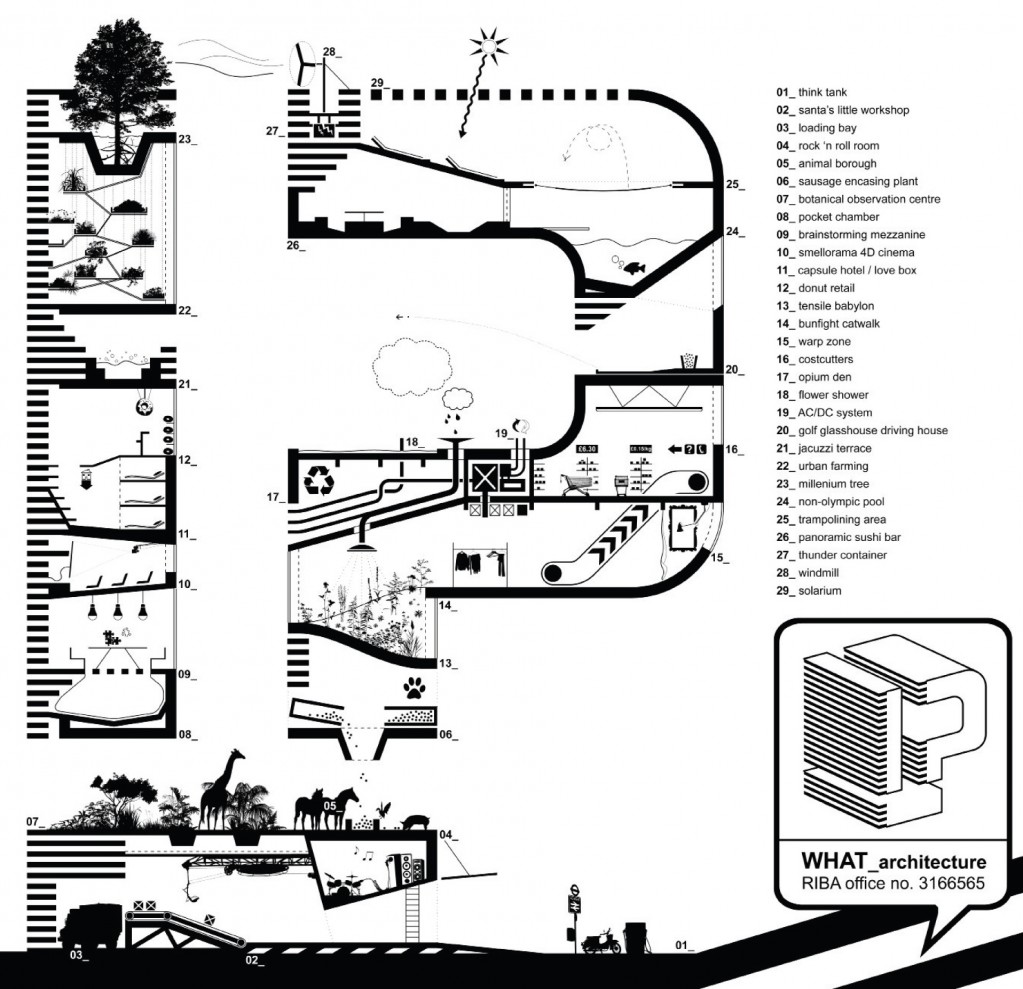 ? Is architecture increasingly becoming a four-dimensional form of adverting: are we branding buildings or building brands? Is the true expression of architecture in the digital age the magazine or the building? Are buildings no longer built to last ‘forever’ but for ‘whatever’: for example, an architecture that lasts 1/60th of a second, equal to that of the shutter-exposure of the camera?
? Is architecture increasingly becoming a four-dimensional form of adverting: are we branding buildings or building brands? Is the true expression of architecture in the digital age the magazine or the building? Are buildings no longer built to last ‘forever’ but for ‘whatever’: for example, an architecture that lasts 1/60th of a second, equal to that of the shutter-exposure of the camera?
000off_Analogue model.
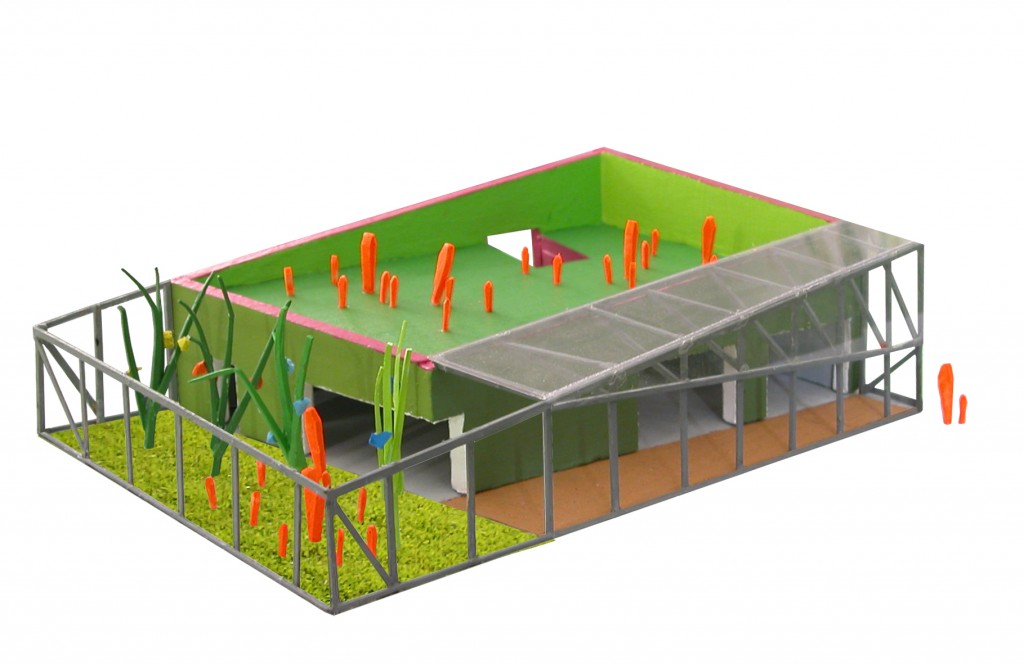 During the design process, WHAT_architecture utilises ta number of ‘cheap and cheerful’ analogue models. In this way the model aids rather than impedes the design process. In the UK, architectural models are often ‘too good’: expensive and often so well made that one wouldn’t dare change the design!
During the design process, WHAT_architecture utilises ta number of ‘cheap and cheerful’ analogue models. In this way the model aids rather than impedes the design process. In the UK, architectural models are often ‘too good’: expensive and often so well made that one wouldn’t dare change the design!
000off_WHAT_architecture design process flow chart
 The WHAT_architecture design process from pipe dream to turning the key configured as a decision-making flow chart.
The WHAT_architecture design process from pipe dream to turning the key configured as a decision-making flow chart.
